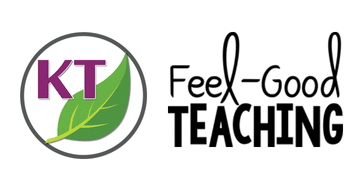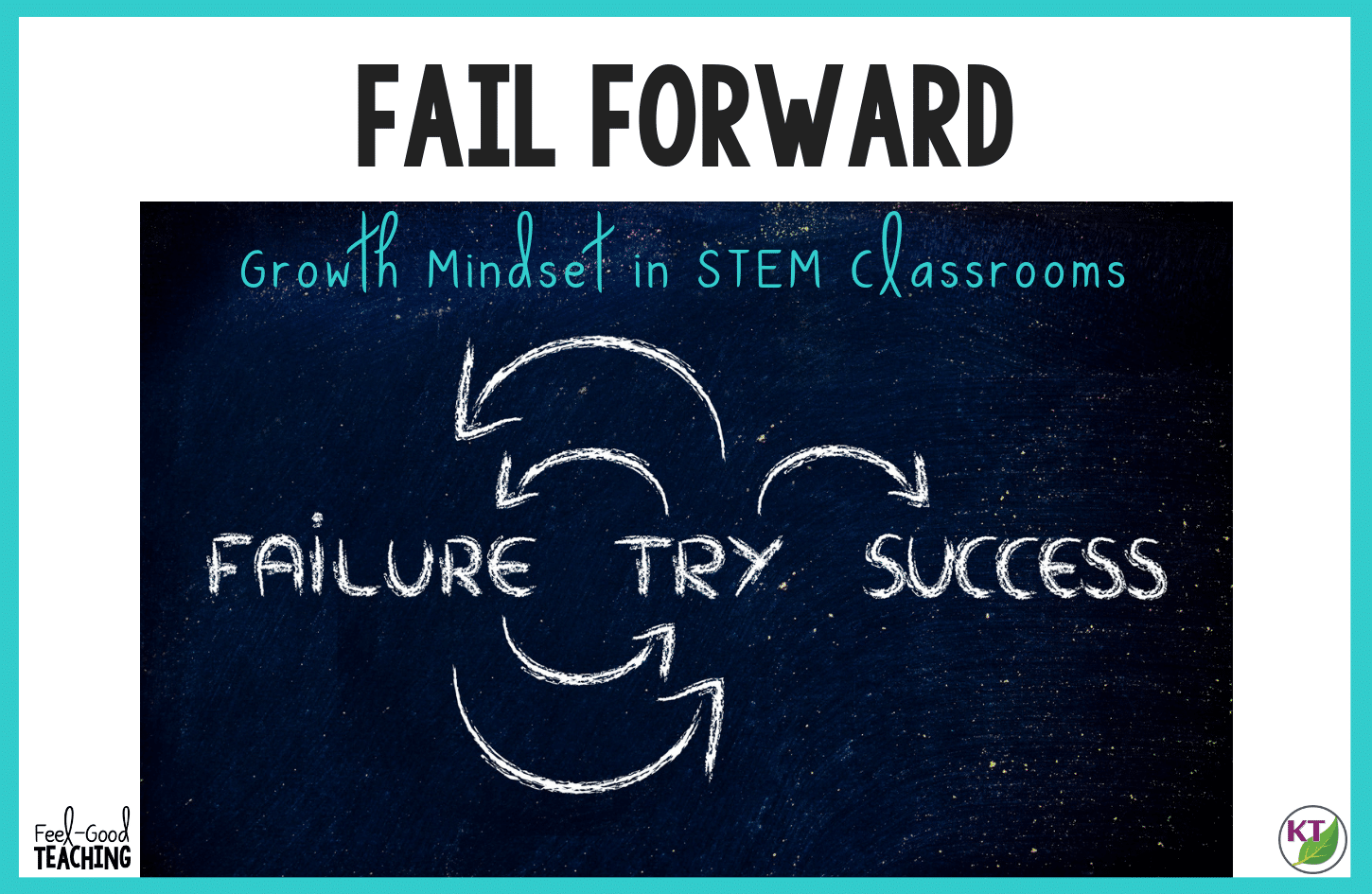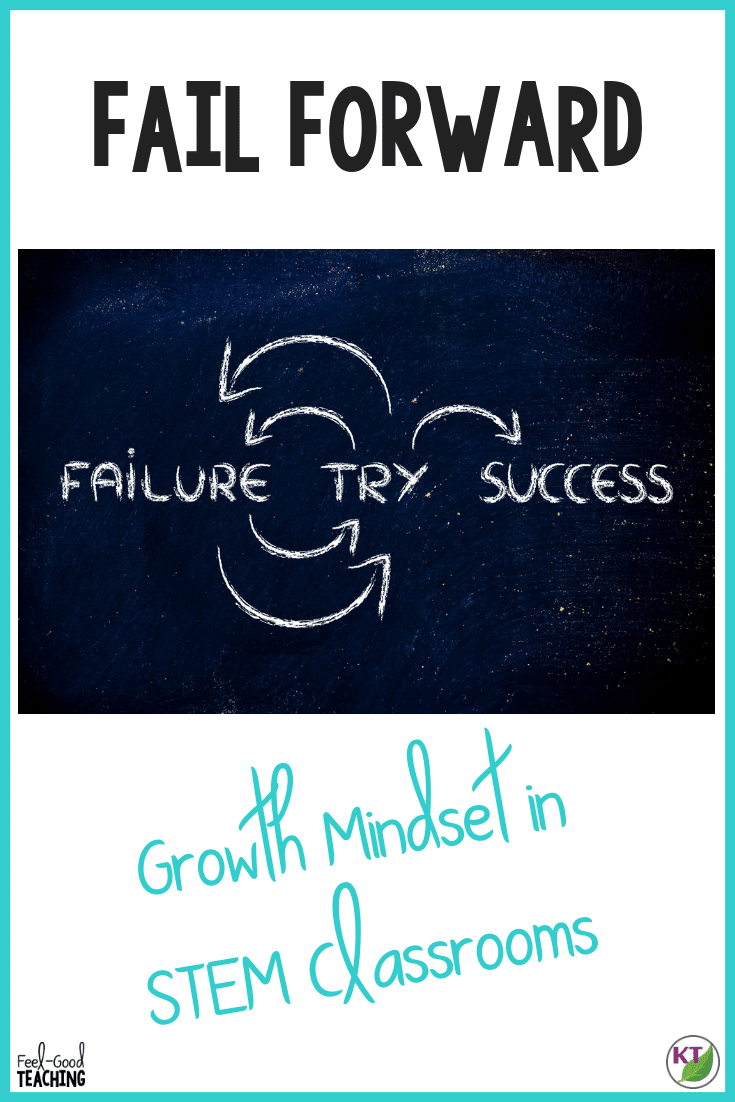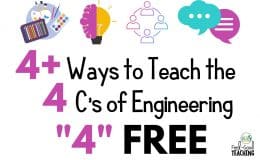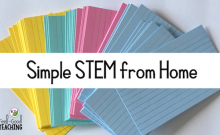What could be more important than helping students develop healthy relationships with productive failure? I’m hard-pressed to come up with a single thing, honestly. If we help students learn to look failure square in the face with fearlessness and determination, we will have laid the foundation for a successful life.
This is why in October 2018, we spent the entire month immersed in Failtober. We built up in baby steps what to do and how to do it, because the how is the tricky part, right? You can find each week summarized in this post.
Today, I want to leave you with a few additional resources and tips for cultivating a classroom culture that capitalizes on, and celebrates productive failure!
Keep Your Growth Mindset Fine-Tuned!
Before you get to worrying about how your students experience failure, you need to take a look inward. I spent a LOT of my years frozen by my fear of failure. I avoided it at most any cost. This is how I know how crucial it is to give students experiences with failure — and of course the bounce-back — early and often. But in order to do a good job of it, I had to be sure my own actions and words didn’t contradict and undermine what I was aiming to help students believe and do.
So be sure you examine those thoughts and hold them up to the light of day! And where it is necessary, do a little work on your own mind game. I find I need to do regular check-ups. I’m currently reading Uncertainty: Turning Fear and Doubt into Fuel for Brilliance, for example.
Podcasts can also be a great pick me up on your drive to/from teaching. I LOVE Teach on, Teach Strong for positive teacher topics. These episodes are especially good for this topic:
Another thing I have found helpful when I’m experiencing my own resistance or fear of failure is to ask myself how I’d want my students to react if the plight was theirs. Then I do my best to act in kind.
True story — I once signed up for a series of belly-dancing classes thinking it would be fun. I hated it so much. I could feel how clunky my body moved and knew I must look like a total idiot. I was prepared to never return after the first class (a big deal since I couldn’t get refunded for the series). And then the most annoying thing happened. On the drive home, a daydream of a student frustrated with learning operations with fractions popped into my mind. Would I want her to give up because she didn’t get it and felt dumb trying to do it? Ugh … no, so I kept going to class. It was the last thing I wanted to do, but that’s precisely why I had to do it. I’d love to give you a success story here about how I became a fantastic dancer; I did not. But, I did try and I got an important reminder of what some of our students experience when they struggle and it made it easier for me to talk the talk because I walked the walk — or poorly danced the dance, as the case may be!
Keep Your Students’ Growth Mindset Fine-Tuned
Students also need to expose their feelings about failure to the light of day. So much of our beliefs go unexamined, so we never get a chance to see if they really hold up and align with reality!
As I showed you in Failtober, I like to use a consistent drip of quotes, stories, and real-life practice on these types of growth mindset skills.
For my STEM classes, I think it is important to define and explore STEM Ideals, those special ways of thinking and interacting with the world that STEM Pros embody. We do this through imagery, STEM Pro quotes, videos, stories, and class discussions. It’s basically a specific form of character education, and I believe it’s crucial in laying the foundation for developing the characteristics we hope to, including embracing productive failure, along with a host of others.
You might find that you’d like to add to your work on growth mindset. Tarheelstate Teacher is kind of a classroom community guru, in my opinion. So if you want to add even more character ed. in the form of morning meeting and other activities, check out her Growth Mindset resource (it’s free if you choose to sign up for Tarheelstate Teacher’s newsletter).
Book Recommendations
In addition to the resources mentioned above, here are a few books to add to your classroom library. Note: the links below are affiliate links. More details are available on the disclosure page, and you’ll find many of these books available at your local library, so check ’em out and save your cash! 🙂








Articles
And here are a few articles to share with your students:
8 Successful Products That Only Exist Because of Failure
Why the Best Success Stories Often Start with Failure
Practice Fearless Failure
Now, this is very clearly the most important step. You need to have your students apply what they’ve learned about failure and growth mindset. This means we need to put ALL students in a position where they will struggle. There are some kids that kind of have this whole school thing nailed! They know how to get straight As and it isn’t even hard for them. I was that kid. It shook my foundation when I finally encountered struggle, well into high school.
I believe STEM Challenges are a valuable tool for this purpose. You can craft the Criteria & Constraints in such as way as to purposely expose students to struggle and potential failure. Sometimes it happens on its own; sometimes you have to mastermind it.
Only when students are in those moments of frustration and failure can you determine if any of the growth mindset study has become practice. The importance of the way you manage those moments of failure in the classroom cannot be overstated. I went through some tips on that in the Facebook live embedded below.
Don’t feel like you’re being mean when you create challenges to elicit failure. It’s perhaps one of the kindest things you can do — giving students a safe place to fail and practice recovering. If it helps, change the objective of the lesson in your mind to practice applying growth mindset skills. It’s easy to believe in resilience, persistence, and determination when you’re doing it in theory. Muscles don’t get stronger by thinking about lifting weights; you actually have to get out there and lift! Students need opportunities to practice and test themselves on these ideals under some pressure, early & often. And who better to provide the opportunities than you?
Check out the rest of Failtober trainings & resources here.
PIN Me!
